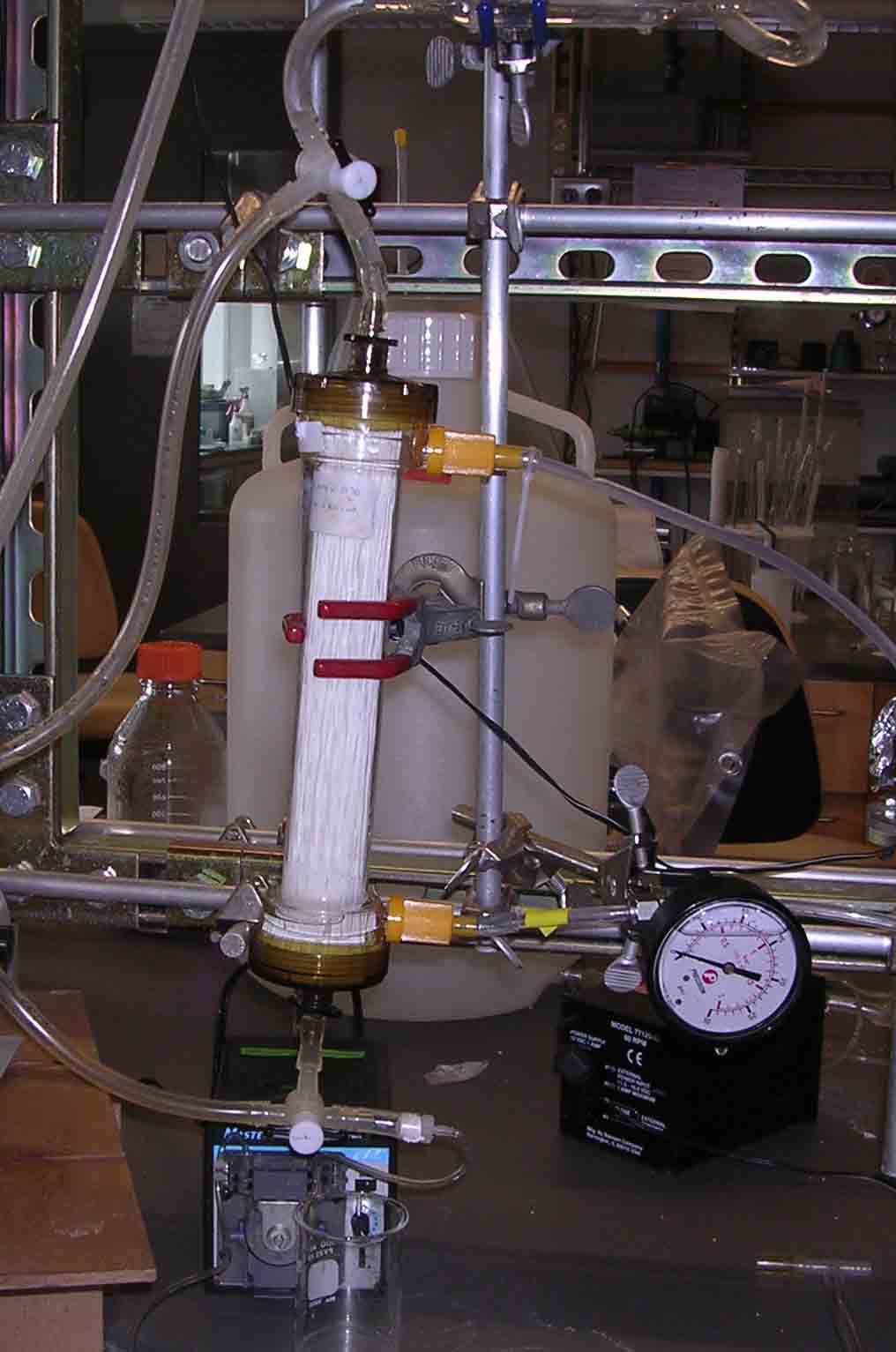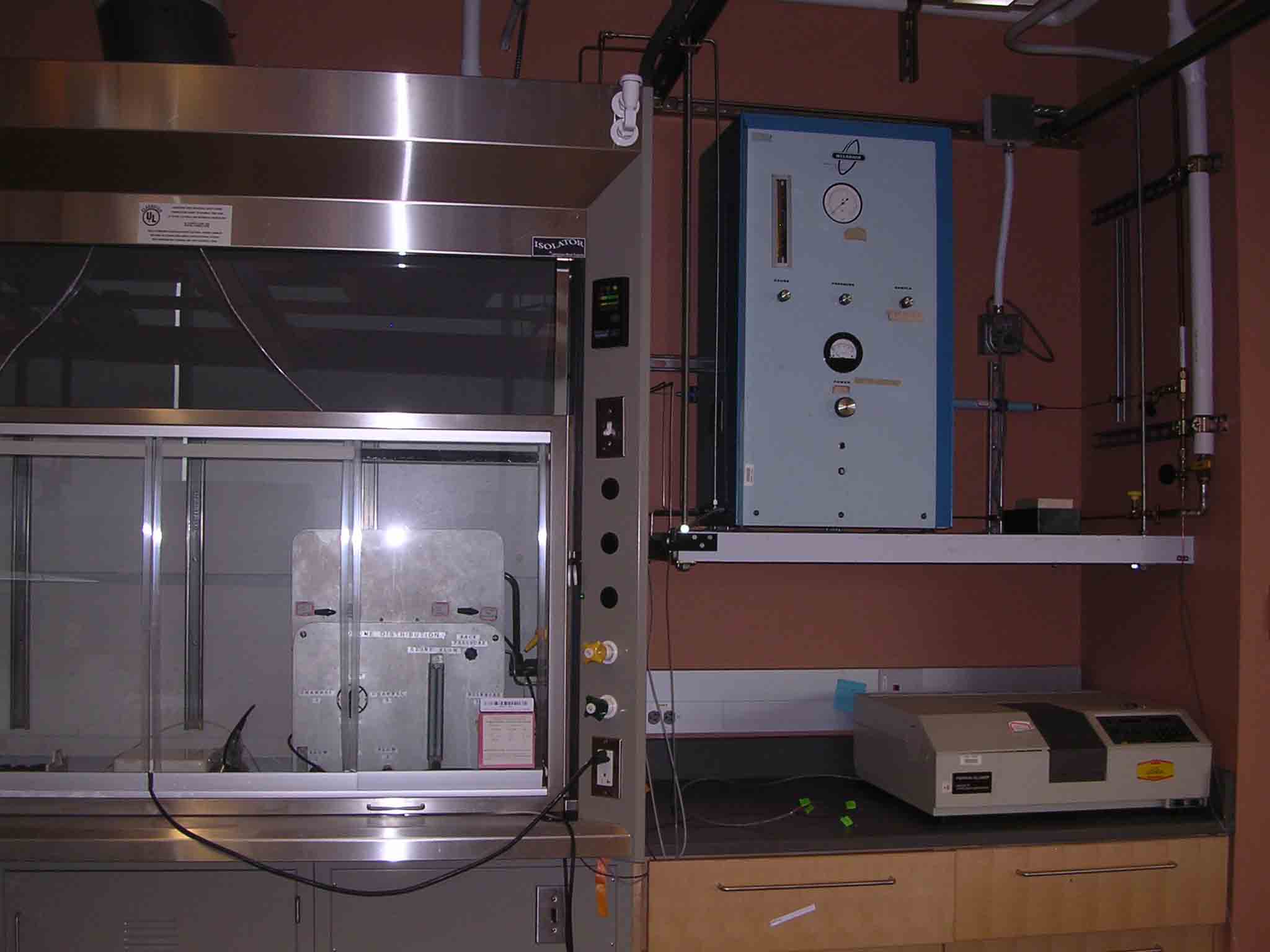
The Environmental Engineering program is well equipped for a conducting a wide range of laboratory-scale oxidation process tests. Several of the EVE faculty have conducted long-term reserach on chemical oxidation treatment for drinking waters and wastewaters. As a result of this work the EVE program has acquired excellent capabilities for the following treatments:
For example, the figure below shows our custom-made ozone contacting and monitoring station. Aside from being used with many funded research proj ects, this setup has been made available to several major engineering consulting firms for their use in the EVE labs.

The ozonation setup shown above, includes the following components:
The use of electromagnetic radiation for treatment of water and wastewater is becoming more important, especially ultraviolet (UV) treatment. In the EVE labs, we have both a low pressure UV reactor. It is a plug flow radial design. This reactor has been used in a variety of drinking water treatment studies.
There is also an electrochemical reactor manufactured by Zappi Water Purification, Inc. This has been used by EVE faculty in treatment of textile process waters and similar dye-laden wastewaters.
Coagulation and subsequent sold/liquid separation is very widely used in water treatment. The standard method for evaluating this type of treatment is the coagulation "jar test". In the EVE labs we have 4 Phipps and Bird Jar test machines, and two Aztec Flotation Testers..
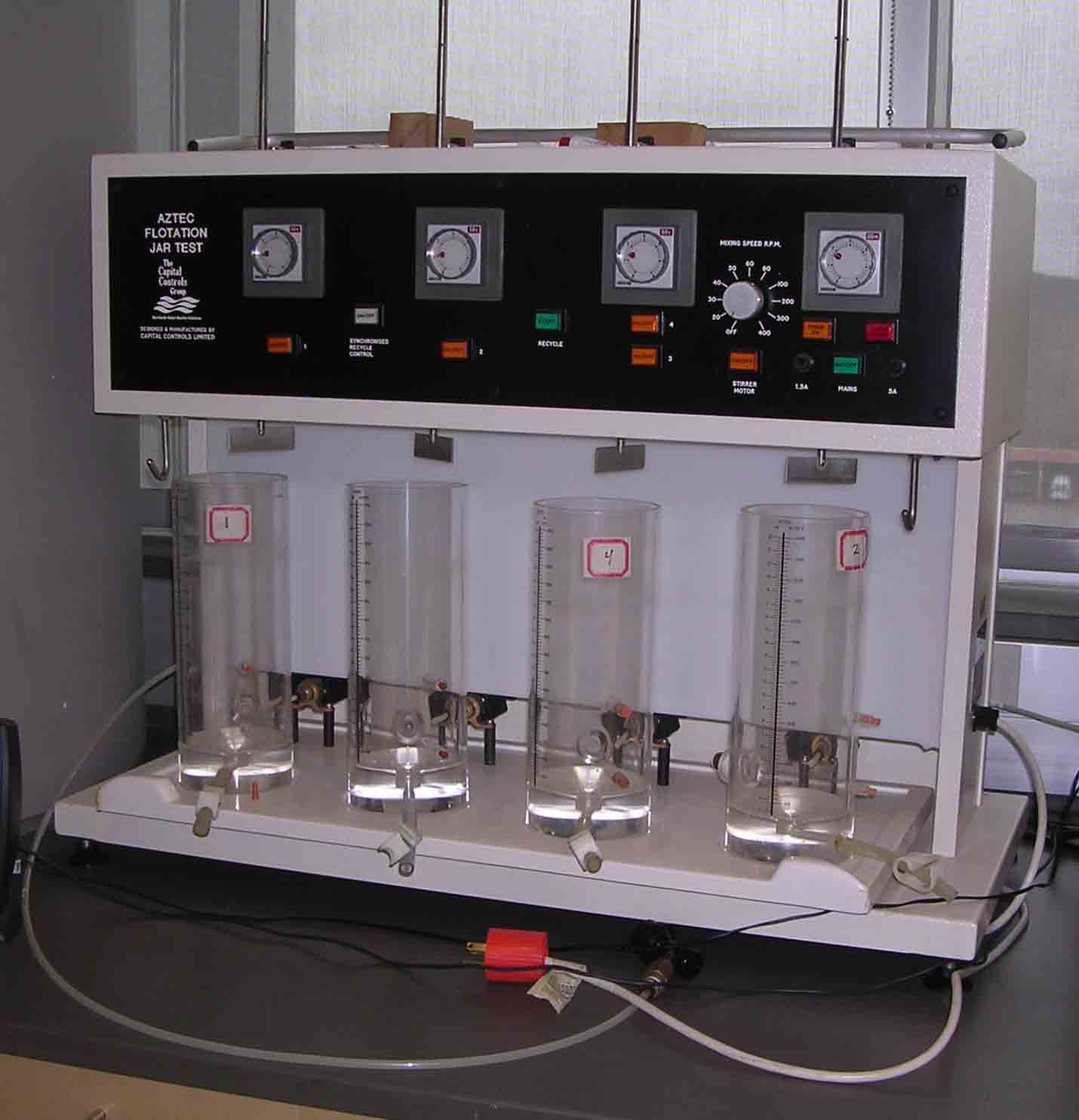
Measurement of particle sizes and particle numbers is very important in understanding coagulation, flocculation and filtration processes. The EVE program has two particle counters capable of measuring
Filtration of drinking water is widely practiced using granular media (sand, anthracite, etc) or membranes. Treatment using filtration has been studied by EVE researchers in bench-scale, pilot-scale and full-scale. There is a wide range of equipment for bench-scale filtration research, both for mechanistic studies and empirical research. The pilot area is set up for granular media filtration studies. This can also be operated over short times to assess clean bed removals, ripened bed remvals and behavior over the full filtration cycle. The system is also capable of long-term operation to test biodegradation in filters.
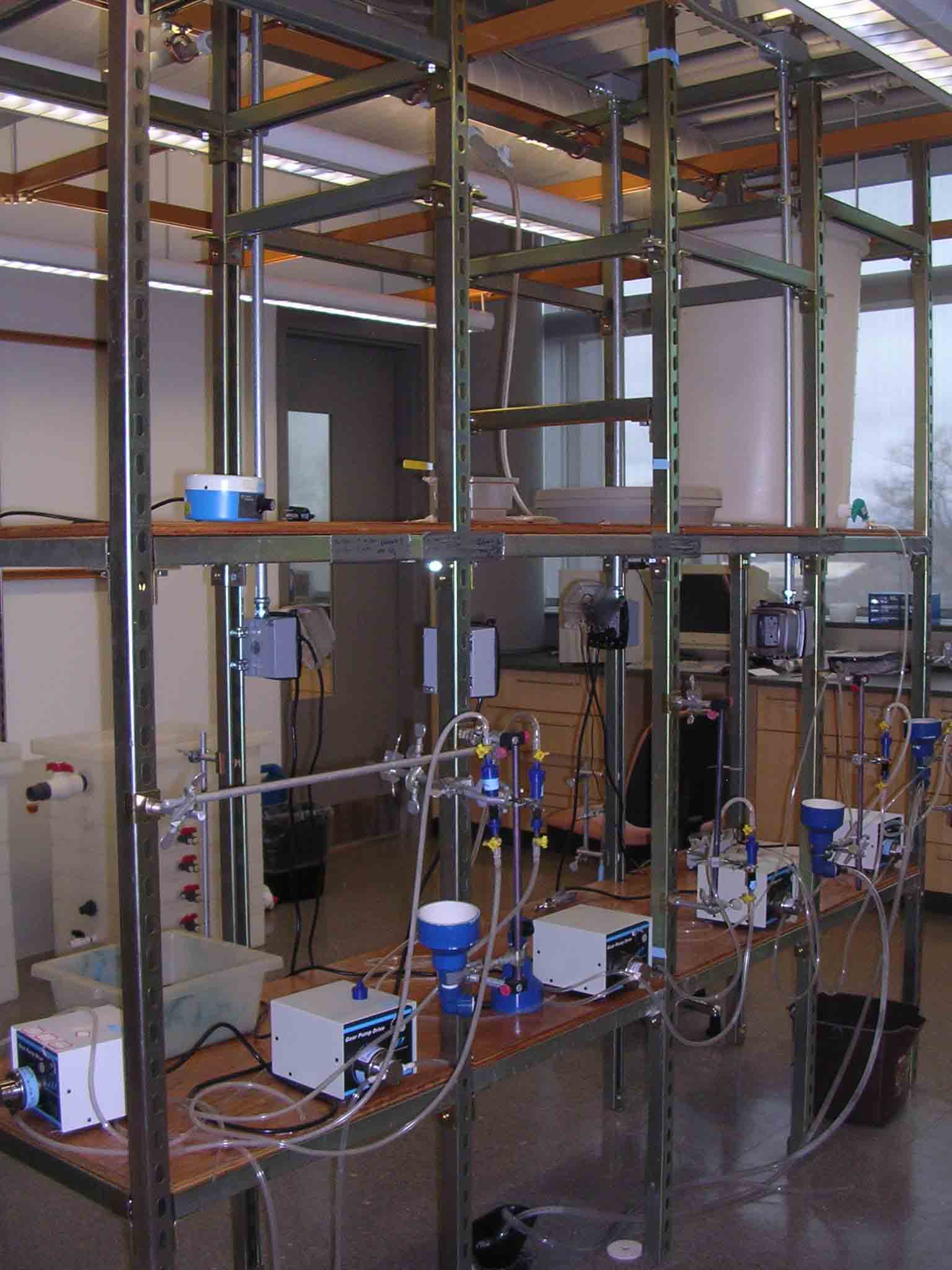
A large number of EVE research projects make use of membranes in some fashion. Some use the membranes in an abiotic manner to effect a simple separation, while others use the membranes to separate electron donor, electron acceptor or microorganisms from product water. Classical membrane treatment is now becoming a common method for purifying drinking water. A broad range of membrane types are used including those operating under low pressure (microfiltration, ultrafiltration) and high pressure (nanofiltration, reverse osmosis). One important piece of equipment for testing membrane rejection is EVE's Osmonics test cell. It uses flat sheet membranes under well controlled flow and pressure conditions.
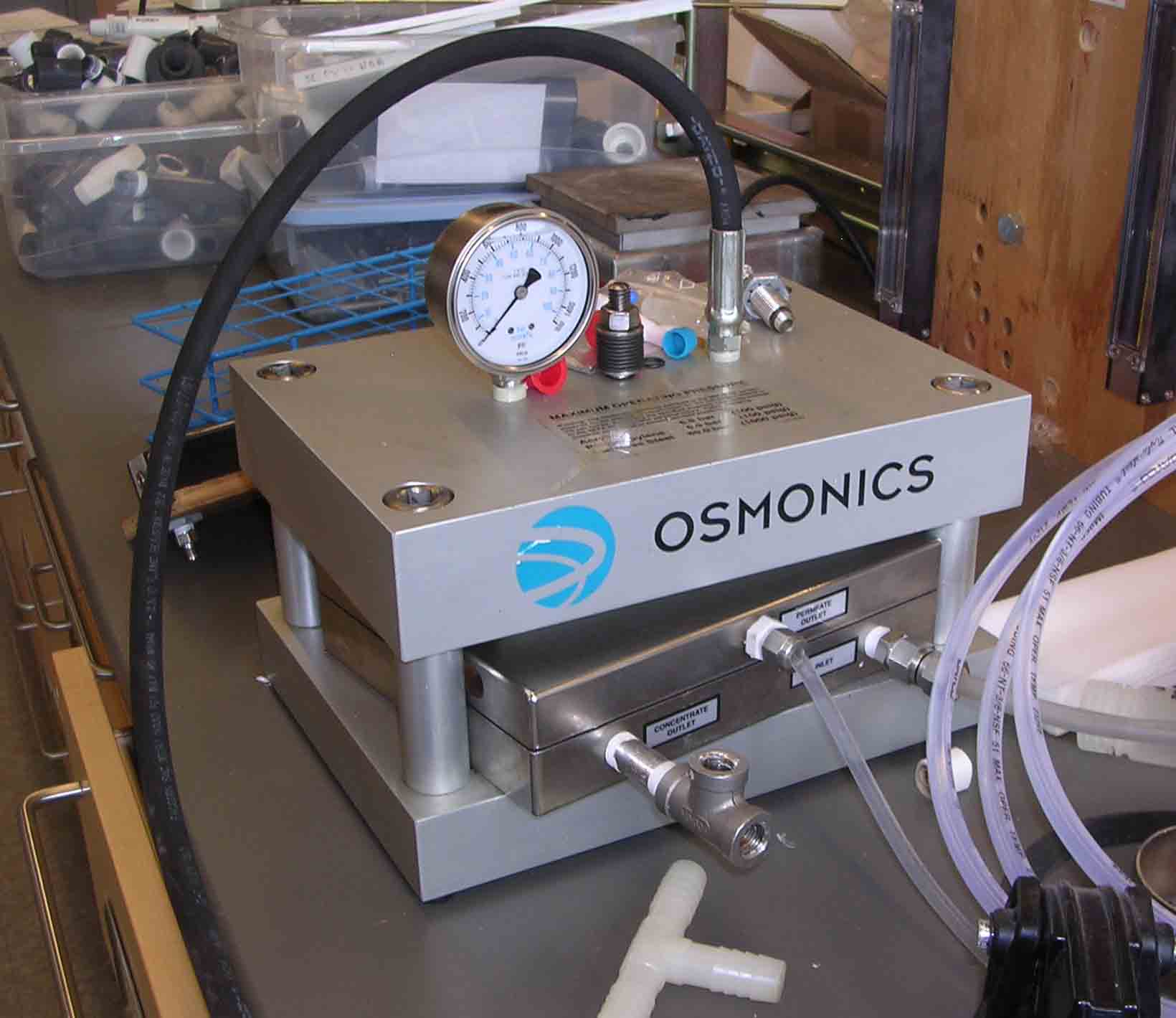
Adsorption to activated carbon and other materials has been studied by EVE researchers for many years. There are many column and pumps within the EVE laboratories that can be used for Adsorption experiments. We have also developed equipment for the RSSCT (Rapid Small Scale Column Test)
Biological treatment in various forms has been used in wastewater treatment for more than a century. More recently, it has been engineered into drinking water treatment plants. An instrumented bioreactor for assessing BDOC (biodegradable organic carbon) in drinking water was developed as part of an NSF grant to the program. This inlcudes an on-line sonde for nitrogen species, oxygen, conductivity, and a continuous flow organic carbon analyzer.
A large number of EVE research projects make use of membranes incorported into bioreactors. These most commonly use hollow-fiber membranes encased in a small cartridge.
